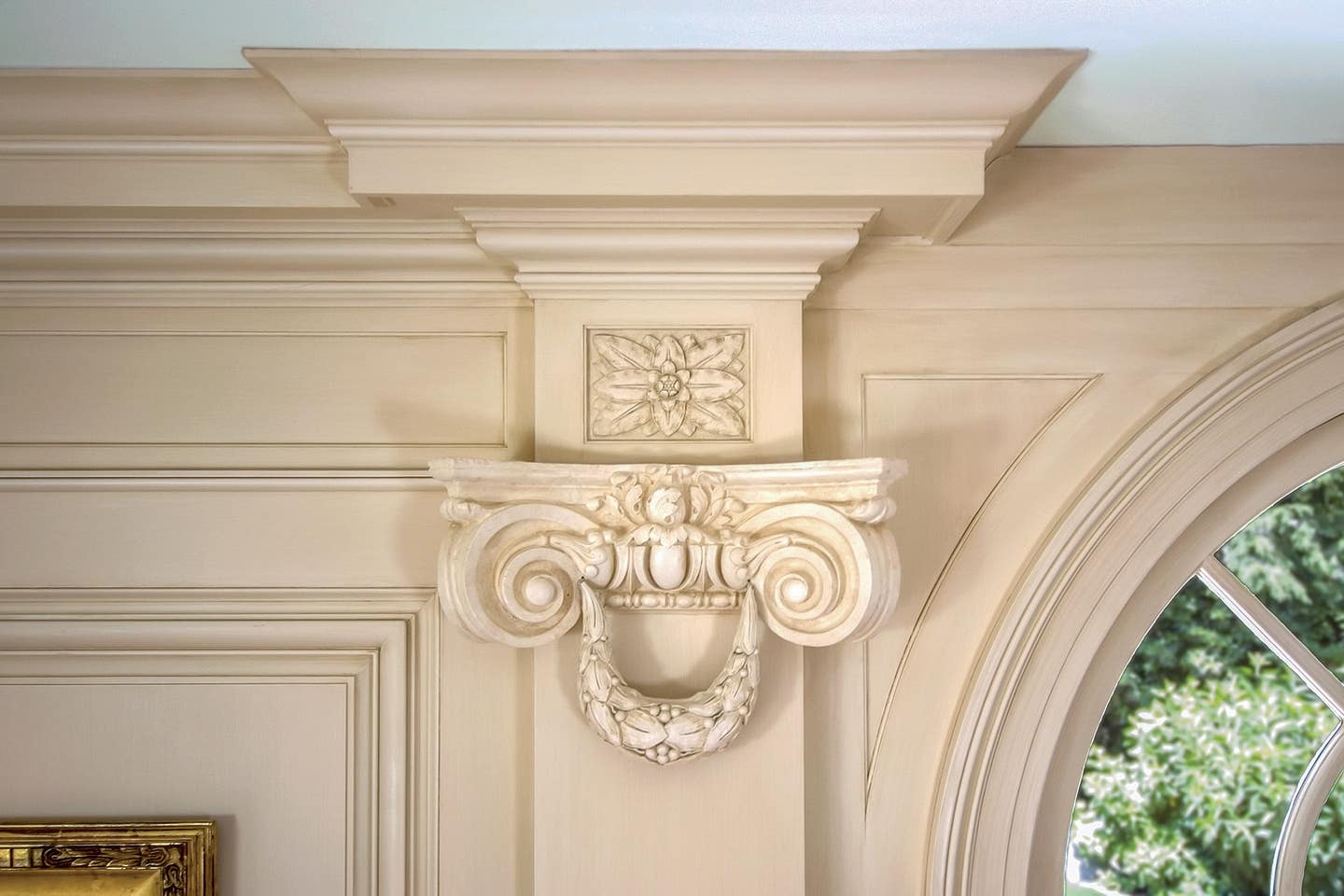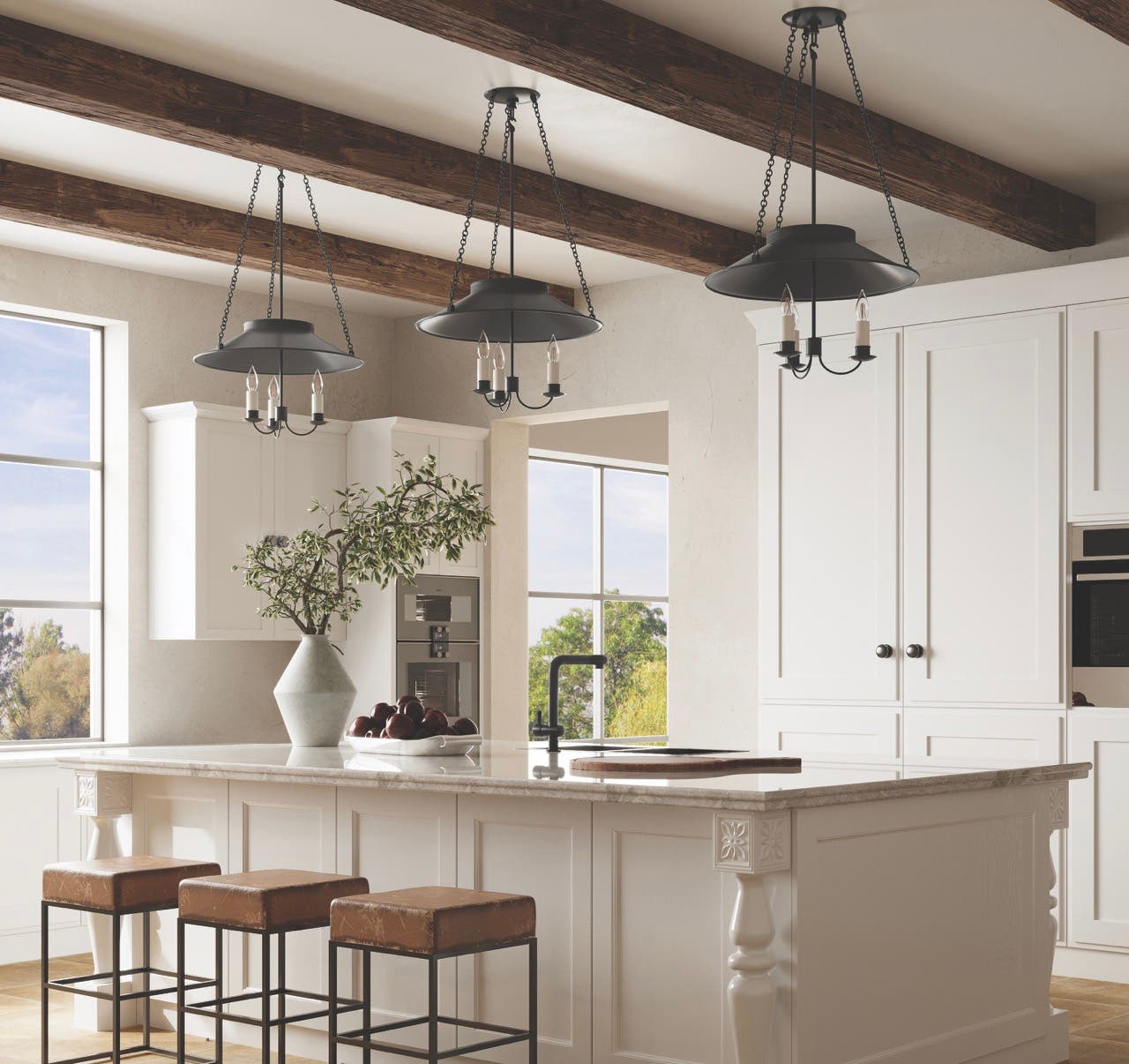
Product Reports
The Language of Design
In two recent columns for Traditional Building, published in the October and December 2018 issues, California architect and ICAA instructor Erik Evens describes and illustrates the various molding profiles and their uses. In the first piece, Purpose of Classical Moldings, Evens restates the idea that classical architecture is a language and that moldings are its alphabet. In the second piece, Using Moldings, Evens discusses the use of precedent, referring to historical treatises for inspiration and to learn a particular dialect of design; the idea of establishing a hierarchy of the various moldings, dominant and subservient moldings; and the proportional and geometric relationship among molding aggregations. Evens also references a 1993 article in Traditional Building, by Donald Rattner, in which Rattner describes moldings as “…the smallest physical units—the atoms, as it were—of classical architecture.”
If Classicism is a language and these atoms of classical architecture are its alphabet, we need to learn not just the vocabulary, but also the grammar of design. How do these elements relate? How do we combine them to tell our story? A critical part of this linguistic analogy is rooted in the idea that Classicism is not a style, but rather a range of styles developed both in different locales to address regional issues of climate and materials, and also as adaptations of historic precedents to meet current programmatic and design requirements. These stylistic traditions are thus the diverse dialects of the classical tradition.
We can look at two very different though related styles from 18th-century Britain. Neo-Palladian buildings from the first half of the century, influenced by Andrea Palladio’s 16th-century publication I Quattro Libri dell’Architettura (and Inigo Jones’s subsequent importation of Palladian ideas to Britain 100 years earlier) were a rejection of the excesses of the Baroque and Rococo—both aesthetically and as a reaction to the decadent Restoration period. Connected to the rise of the mercantile class in Britain, Palladian architecture was, according to historian Robert Tavernor in his book Palladio and Palladianism, “…a style that would express the new self-confident nationalism: the ‘antique simplicity’ of classical virtú.” In contrast, Neo-classicism, directly influenced by the rationalism of the French Enlightenment, looked back farther to Antiquity. Emerging finds in archaeological digs in Italy and Sicily provided severe and rational forms that suited an architecture that Hugh Honour, in his book Neo-classicism, describes as “…primitive purity stripped …to its primal and strictly autonomous state.” The early Georgian, Neo-Palladian works brought to the New World in Colen Campbell’s Vitruvius Britannicus were the foundation of American Georgian architecture. Late Georgian ideas, including Neo-classicism, were seen in our own Federal and Greek Revival periods.
This previous digression into Neo-Palladianism and Neo-classicism is behind the tale of the design of a room I executed several years ago in a Georgian Revival house outside Boston. At the time, I was employed as an architect for The Classic Group, a design/build firm that specialized in the renovation of historic houses. We prided ourselves on seamlessly integrating new work into existing houses. Our philosophy was to try to address our current design problem from the point of view of the house’s original architect. Our new project was to renovate and adapt a lovely brick house for a returning client. The house was oriented perpendicular to the street with a gracious forecourt to the east and a one-story wing projecting into the garden to the west. The house had suffered from lack of maintenance. The one-story wing, originally a paneled library, had had water infiltration in the cavity wall behind the brick veneer, causing severe rot to the wood-framing.
All interior finishes, as well as the stud walls, were gutted, leaving three one-story brick walls in place, with staging supporting the original roof framing. We did not quite have a tabula rasa as any design for the new room would have to take into account new and existing windows in the existing masonry openings. At this time, Peter LaBau, one of the owners of the firm, suggested to the client using an ornate pilaster capital from Decorator’s Supply Corp., namely, the Italian Renaissance Ionic capital with festoons. My job was to base the design of the room around this one pre-selected element, and to somehow make it work with the rest of the house.
My first decision broke with the tradition of our office to seamlessly blend the old and the new. The capital did not have a Georgian precedent, and because this low wing was a distinct structure to the side of the house, I decided that this room should have its own unique story. It overlooked the gardens, and the large windows gave it a conservatory-like feel. I wanted something feminine and playful in contrast to the restrained Georgian geometries elsewhere in the house. Because the client collected French art, I decided to base the design of the room on contemporaneous French Neo-classical interiors. Fortunately, I owned a copy of the yearbook of the Boston Architectural Club from 1921, which included measured drawings of Ange-Jacques Gabriel’s Petit Trianon at Versailles. Antique books with measured drawings are coveted by architects who practice traditional architecture. Short of going into the field and measuring historic buildings for ourselves, they are exactly the sort of historical treatises we seek for inspiration.
The profiles for the interior paneling that Gabriel drew are not the Euclidian arcs that Rattner describes of Roman Classicism, but voluptuous elliptical curves that turn back on themselves, casting deep shadows and causing the walls to undulate and breathe into the room. Another issue that affected the design is that the existing windows to the southwest were quite tall, with little space between the window head and the ceiling for a complete entablature. The room would be ringed with tall pilasters, with freestanding columns between the windows.
The next rule broken was to eliminate the architrave from the entablature. The architrave is the lowest of the three assemblies of moldings that compose the entablature. Our frieze would bear directly upon the capitals, and an extrusion of the abacus profile would continue between the pilasters and define the frieze above the panels. The pilaster bases were a variation of the typical attic base Evens describes in his column, Using Moldings. Rather than the conventional toruses of Vitruvian design, I continued the elliptical theme and used thumb moldings above and below the scotia, adding to the sense of gravity bearing down and deforming the column base.
I sketched the design rather quickly as the crew in the field were re-framing the walls as I was trying to work out the design. I did not have accurate field dimensions to control the design. We had no time for the usual detailed plans and sections working out every intersection and the turning of each corner. I drew profiles and typical wall sections. I specified a selection of French-style composition ornament from Decorator’s Supply, and there were no shop drawings generated to review and check the work. This might seem like a recipe for disaster, but what unfolded was one of the most rewarding design experiences of my career.
For a designer, the great advantage of working in a design/build firm is that he or she works on multiple projects with the same people. The project managers in the office are at the next desk to discuss construction methods and budget; the crew in the field become familiar and are willing to work to find the best way to implement the design goals. For the French room, custom-milled stock was delivered to the site and acclimated in the center of the room within a week or two of the completion of the design. I met with the finish carpenter on site and we spent many hours working around the room, referencing my drawings and mocking up transitions until we both were satisfied with the design and how the pieces fit together. Aaron Hiltebeitel, my colleague in this exercise, is an exceptional finish carpenter and furniture maker; that was the level of expertise required to make the design with limited documents successful. He was able to respond to my ideas and offer suggestions, and together we designed and detailed the room in situ.
For this Georgian Revival house, the language of Classicism was the common framework that allowed the refined French dialect of this new room to relate to existing Palladian-influenced interiors of the house. Through the use of precedent, historical sources, and enough familiarity with the language to be willing to break a few rules, we were able to work around the room.








